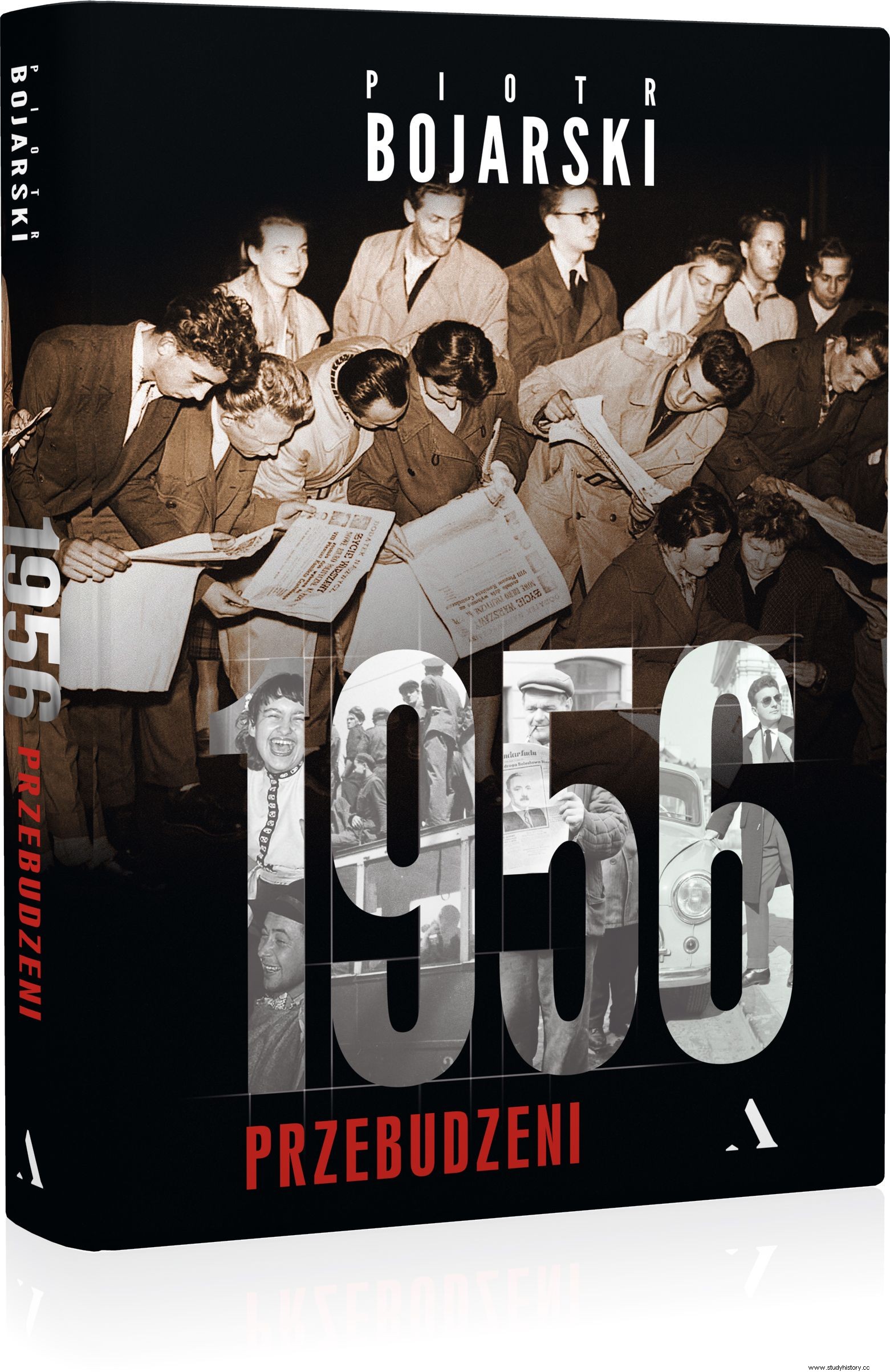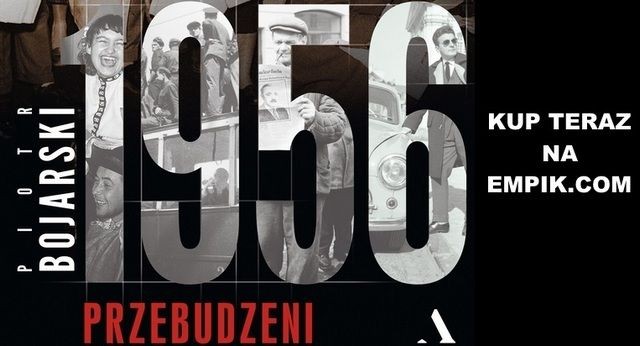They had their whole lives ahead of them. Ideals and slogans of fighting for a better tomorrow in their heads. They saw in their childhood the cruelty of the war in which many of their older colleagues were killed. Maybe even worse for them. Their own homeland took their best years.
Despite their great will, the teenage scouts of the Gray Ranks had virtually no chance to fight the Germans, arms in hand. There were not enough guns to make sure there were enough of them for "little boys" too. So the younger ones had to listen to the stories about the heroism of Zośka, Rudy or Alek and ... wait for their time.
This one came much faster than they could have expected. The German occupiers were replaced by the Soviets. The communist authorities tried to subdue the Polish Scouting Association, steeped in the independence, war ethos of the Gray Ranks. The organization, which numbered several hundred thousand members, was slowly acquired by using the well-known communist salami tactic . So small but consistent steps. As a sign of protest in 1947, its ideological leader, Aleksander Kamiński, the author of the famous "Stones for the Rampart", left the scouting movement.
Fifteen-year-old founder of a secret organization
In Krobi, a tiny town halfway between Wrocław and Poznań, 15-year-old Kazek Szymański and his friends could not imagine any further activity in the communist scouting. At home, he talked a lot with his father, a Greater Poland insurgent, about Soviet crimes, especially about Katyn - three family members were prisoners of the Ostashkov camp and were shot in Miednoje.

In 1947, in protest, the author of "Kamieni na szaniec", Aleksander Kamiński, left the scouting. The cover of the first edition of Kamiński's novel, 1943 (source:public domain).
Together with two friends, Kazek founded the secret, independence organization "Zawisza", which opposed the communist dictatorship. In a short time, the organization included several dozen people, mainly young scouts. They trained using underground prints, copied leaflets at the parish priest's, and drew anti-communist slogans on the walls. With time, the first examples of firearms also appeared in their hands. In those years it was not difficult to find it - boys won it, among others from former German warehouses, which were not guarded by anyone after the war.
Under the wings of the Home Army soldier from the capital
After two years, the organization's activities became more dynamic under the influence of contacts with the former Home Army member Marian Rączka (pseudonym "Kościuszko"). Marian came from nearby Gostyń, but during the war, as a 19-year-old, he fought with arms in the Warsaw Uprising and was awarded the Cross of Valor for his bravery. No wonder that for young scouts he was a real authority and a living legend.
Members of "Zawisza" regularly traveled the 80-kilometer distance to Głogów, where Rączka organized military briefings for them, allegedly on behalf of the Home Army (formally dissolved in January 1945). He ordered to set up branches of the organization in the surrounding villages and to stockpile weapons.

The article was based on the book by Piotr Bojarski entitled "1956. Awakened ”(Agora 2016).
In the spring of 1949, the "Zawisza" organization heavily covered three poviats of the former Wrocław Province. The uncontrolled growth of the network and the involvement of a large number of people very quickly led the scouts of wetboys from the Security Office to the trail ...
Big shit
In July 1949, several dozen people from the organization fell into the hands of the secret police at once. It was a consequence of taking over the archive of "Zawisza" by the security officers, which, apart from the unmasking of the group's members, will be excellent evidence in the show trial.
Kazimierz Szymański was at that time in a camp near Kłodzko, was a third grade student of a high school. A prisoner came to the camp. In front of shocked colleagues and teachers, the secret police forced three teenagers into her and took her to a detention center in Gostyń. There they were regularly tortured by sadists from the Ministry of Public Security. Beating with heavy wrenches and the edge of the hand on the neck, squats and frogs until the loss of consciousness - these are just some of the tortures that were used against scouts.

Monument to Fighters with Fascism and Stalinism in Gostyń (author:Basik07, license:CC BY-SA 2.5).
After the investigation - a quick trial before the Military District Court in Poznań. The objection - as Piotr Bojarski writes in the book 1956. Awakened ”- is a membership in the“ illegal union ” , an attempt to forcibly change the system of the Polish state. Legal basis:draconian Decree on crimes particularly dangerous in the period of state reconstruction from 1946.
On the basis of this decree, after the war, the communist authorities sent thousands of Polish patriots, often teenagers, to prisons. An exemplary catalog of offenses and penalties? Misleading the authorities by giving them false information - a minimum of five years in prison, and even the death penalty. Public incitement to acts directed against allied unity with the USSR - minimum three years in prison. Damage to a communist monument - imprisonment up to five years.
This article has more than one page. Please select another one below to continue reading.Attention! You are not on the first page of the article. If you want to read from the beginning click here.
11 years in prison for a 17-year-old
By the sentence of a military court, Szymański was sentenced to eleven years in prison and deprivation of public rights. His younger brother Stefan (then 13-year-old!) was given concessions and sentenced to ten months in prison. The court sentenced Marian Rączka and Jan Stachowiak, who had the weapon to death, to prison for life.
Kazimierz Szymanski began his long journey through the prisons of the People's Republic of Poland - Wronki, Rawicz, Montelupich in Krakow, and finally ended up in the infamous, modeled on Soviet labor camps, Progressive Prison for Youth in Jaworzno . There were sent those convicted of political crimes who were under the age of 21.

Partisans from Marian Rączka pseudonym "Kościuszko". The handle was a real authority and a living legend for the Zawiszaks. (source:public domain).
The camp in Jaworzno had a long history. First, it was a subcamp of the German Auschwitz-Birkenau , after the end of the war, it served as a transit camp for the displaced Germans, and then the communist authorities imprisoned there Ukrainians who remained on Polish soil, who were suspected of sympathizing with the UPA.
The local population had the same associations with all the prisoners. As one of the young prisoners recalls: They thought we were young Nazis. As they passed by the spit at us, they cursed, threw stones . The camp commandant was one of the most brutal security service oppressors - Salomon Morel, who greeted the new arrivals with the following speech:
Bandits! You have come here to rehabilitate yourself with hard work for the crimes committed against People's Poland. There is absolute discipline and obedience to superiors. The one who opposes the regulations - will die.
The scout from Krobi was lucky anyway - because he had experience as a butcher (his parents ran a butcher's shop), he was referred to the camp kitchen. He did not have to work in very harsh conditions in the mine, with starvation rations and sadistic guards. The latter shot a sleeping prisoner in 1955, who was legally resting after a night shift - after this execution, a revolt broke out in the camp.

The times of Bolesław Bierut are the period of the greatest brutality of the UB and the most ruthless surveillance (source:public domain).
As a prisoner of the camp, Szymański received 1/10 of the salary he would have received at large for his work, and once a month he could write a letter to his family (subject to the censor's approval, of course). He had no hope of getting released early - the communist authorities passed amnesties, but they did not apply to political prisoners.
Freedom after seven years
It was only the amnesty passed on April 27, 1956 that allowed the release of thousands of people convicted of political crimes under the inhuman decree of 1946. As he writes in his poignant book 1956. Awakened ”Piotr Bojarski:
The gates of the prisons grind more and more often, they release the forgotten and humiliated heroes (...). All those who by some miracle did not get a bullet in the back of the head - and unmarked quarters in the cemetery in the "Field" (...). Battered and sick, without teeth, knocked out by the security service torturers. Physical and mental wrecks.
On May 31, 24-year-old Kazimierz Szymański returned to his family. He has spent almost 1/3 of his life in prisons and labor camps. He failed to finish school, had to report to a police station every month for a long time, and was further harassed by the Security Service for the next thirty years.

Jaworzno, Permanent Housing Estate, Inwalidów Wojennych Street. Former camp grounds. Monument to "Jaworzniaks" of the Association of Young Political Prisoners of the Stalinist Period (author:Beemwej, license:CC BY-SA 3.0).
In 1994, the Provincial Court in Poznań overturned his conviction in 1949, and President Lech Wałęsa awarded him with the Home Army Cross. Eleven years later, President Lech Kaczyński decorated him with the Knight's Cross of the Order of Polonia Restituta.
In the middle of one of the blocks of flats in Jaworzno, built on the site of the camp, today there is an occasional obelisk with a peculiar memento: Freedom can be regained, youth - never. It is a tribute to the thousands of teenagers who lost their best years in this place.
Buy the book at empik.com

